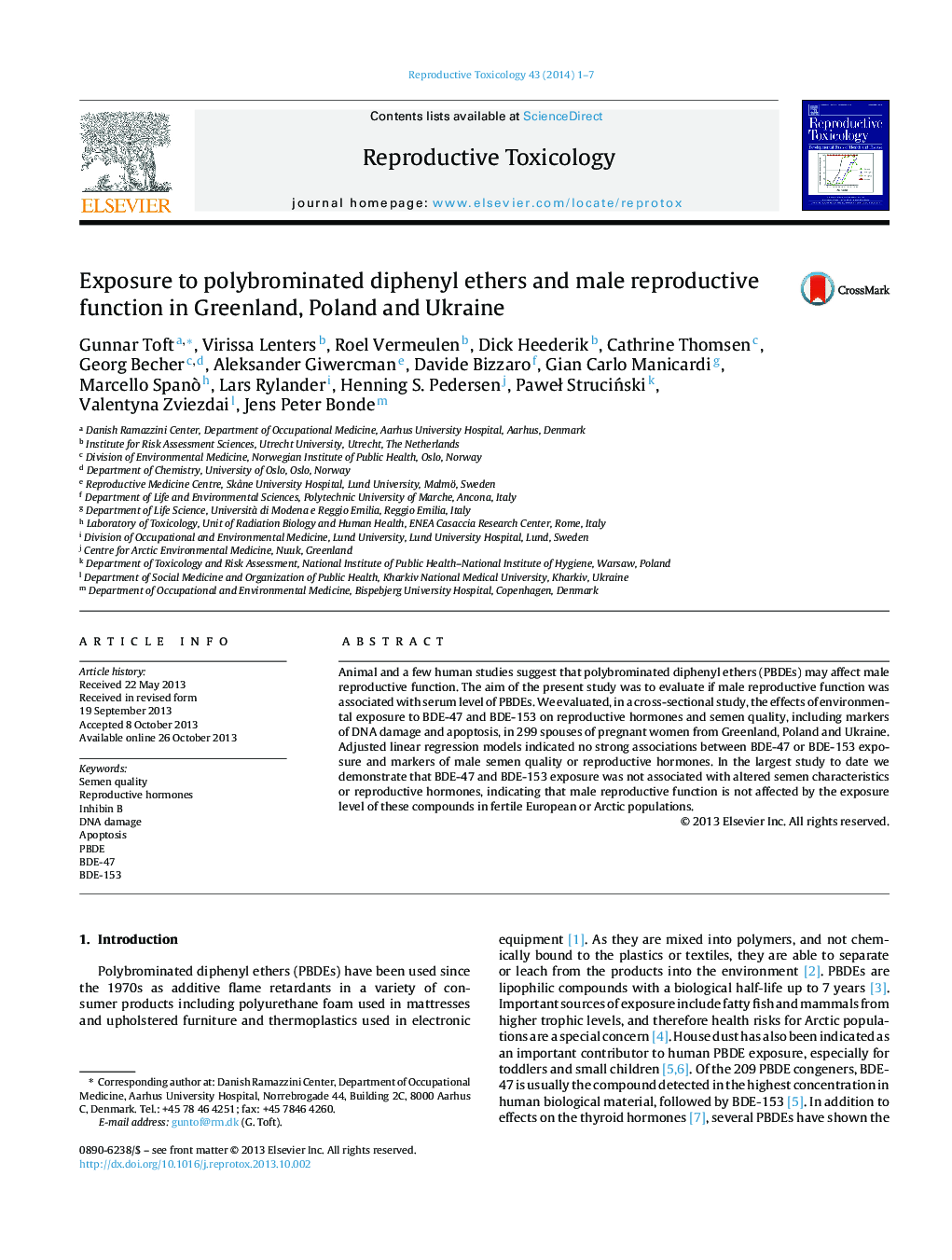| Article ID | Journal | Published Year | Pages | File Type |
|---|---|---|---|---|
| 2593550 | Reproductive Toxicology | 2014 | 7 Pages |
•BDE-47 and BDE-153 were detected in more than 97% of serum samples from 299 fertile men from Greenland, Poland and Ukraine.•BDE-47 and BDE-153 were not associated to male semen quality, sperm DNA damage, apoptosis markers, or reproductive hormones.•The results indicate that background PBDE exposure in Greenland, Poland and Ukraine is not affecting male fertility.
Animal and a few human studies suggest that polybrominated diphenyl ethers (PBDEs) may affect male reproductive function. The aim of the present study was to evaluate if male reproductive function was associated with serum level of PBDEs. We evaluated, in a cross-sectional study, the effects of environmental exposure to BDE-47 and BDE-153 on reproductive hormones and semen quality, including markers of DNA damage and apoptosis, in 299 spouses of pregnant women from Greenland, Poland and Ukraine. Adjusted linear regression models indicated no strong associations between BDE-47 or BDE-153 exposure and markers of male semen quality or reproductive hormones. In the largest study to date we demonstrate that BDE-47 and BDE-153 exposure was not associated with altered semen characteristics or reproductive hormones, indicating that male reproductive function is not affected by the exposure level of these compounds in fertile European or Arctic populations.
